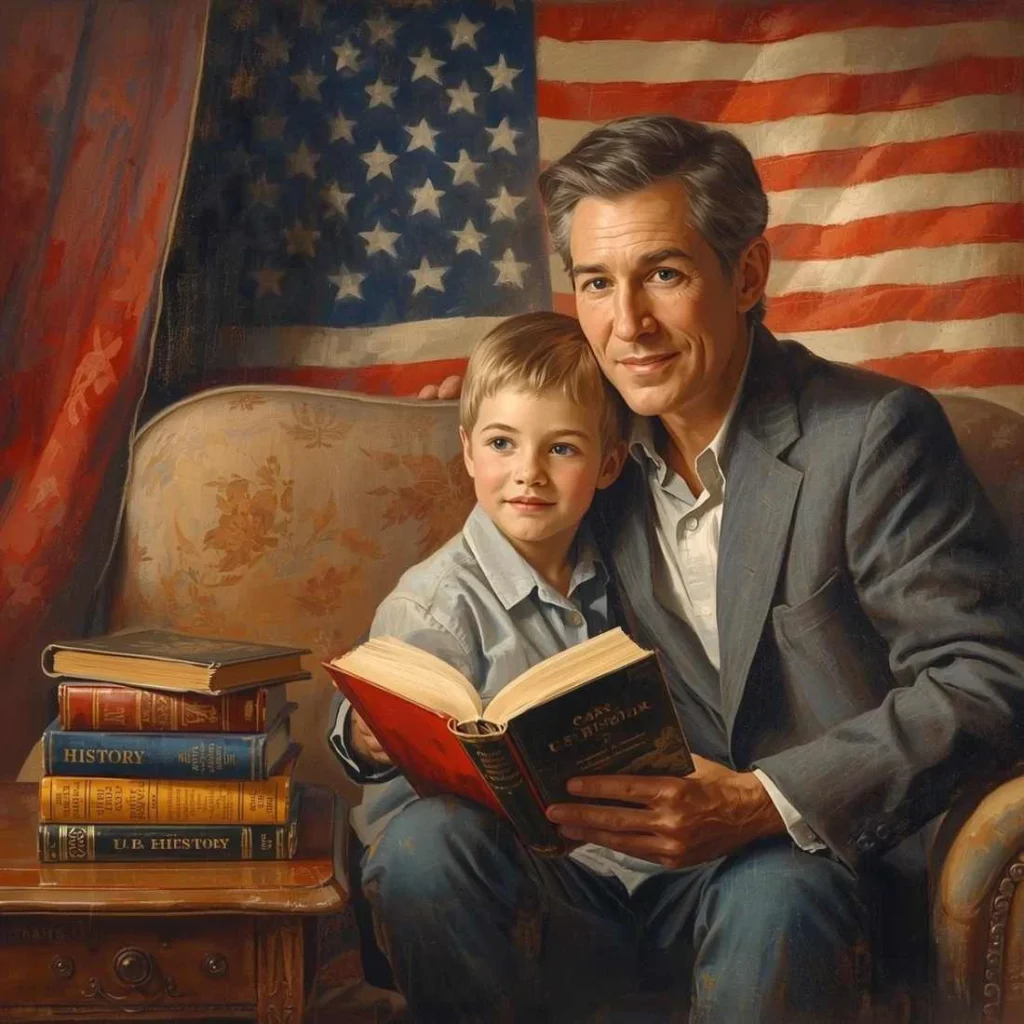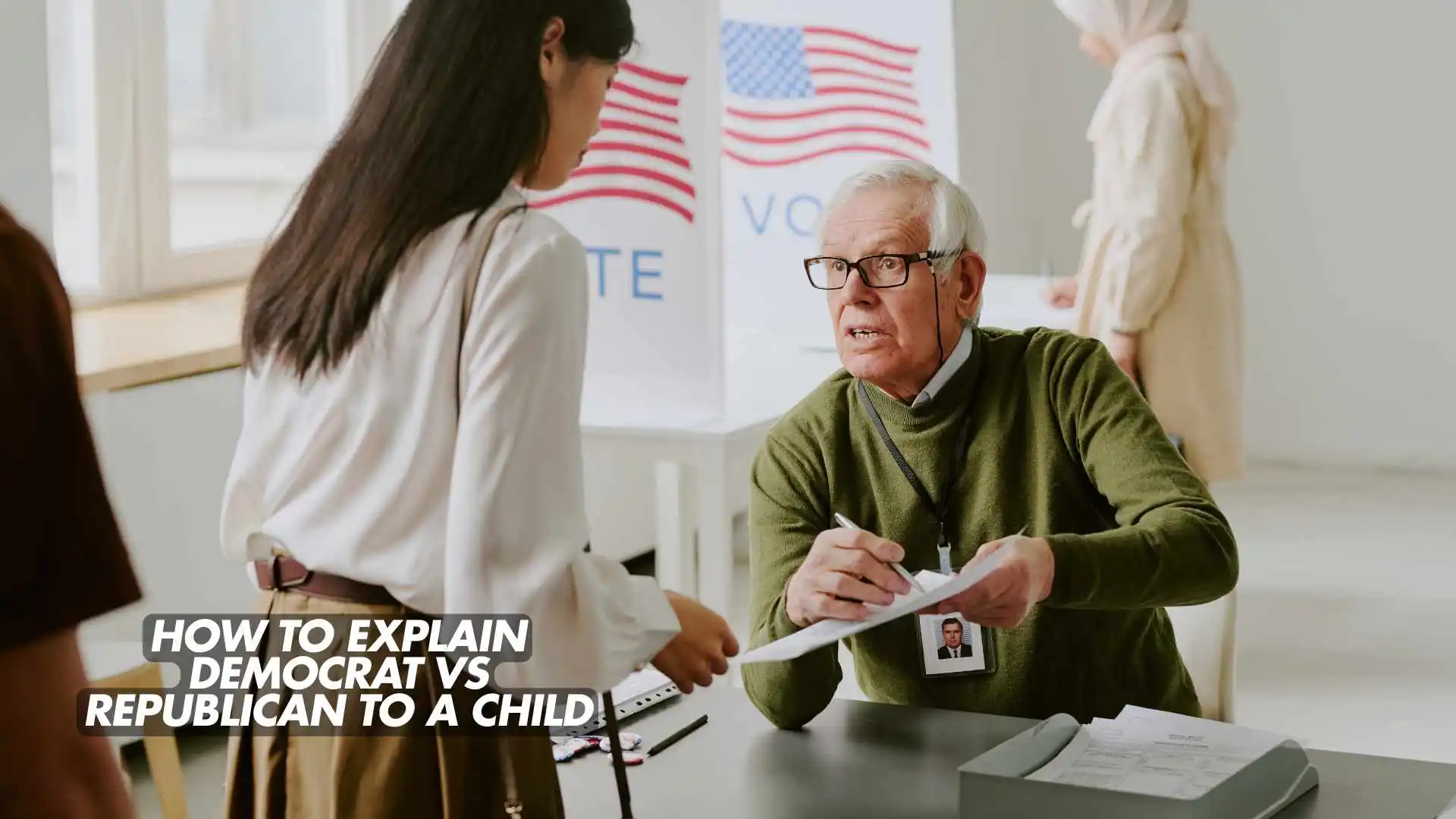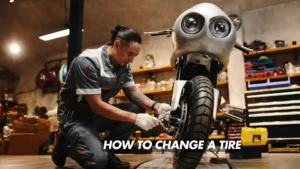“Mom, what’s a Democrat?”
“Dad, why do people argue about Republicans?”
If you’ve ever heard your child ask a question like this, you’re not alone. Kids are curious — they notice political ads, overhear grown-ups talking about elections, and see news headlines they don’t understand.
As adults, explaining politics can feel tricky. We want to be honest, accurate, and neutral, but it’s hard to simplify such a complex topic. That’s why knowing how to explain Democrat vs Republican to a child in a clear, age-appropriate, and balanced way is so valuable.
In this article, we’ll explore simple ways to teach kids about political parties, share analogies and examples that make sense, and give you confidence to talk about democracy without bias.
1. Why It’s Important to Talk About Politics with Kids

Children start noticing differences and fairness early in life. Talking about politics helps them:
- Develop critical thinking
- Understand different viewpoints
- Learn respectful communication
- Build civic awareness
Explaining U.S. political party differences doesn’t mean pushing opinions — it’s about giving kids the tools to think, ask questions, and respect others’ beliefs.
2. Start with the Basics: What Are Political Parties?
Before jumping into Democrats and Republicans, start with what a political party actually is.
“A political party is like a team. The people in the team share ideas about how to make the country a better place. They work together to choose leaders and make rules they believe will help everyone.”
Keeping it simple sets the stage for explaining Democrats vs Republicans later.
3. The Two Main Political Parties in the U.S.

In America, the two biggest political teams are:
- The Democratic Party, often called “Democrats”
- The Republican Party, often called “Republicans” or “the GOP”
Both groups want the country to be strong and successful — they just have different ideas about how to get there. Understanding this helps children see that political disagreement isn’t about being right or wrong, but about different ways to solve problems.
4. What Democrats Believe (Simplified for Kids)

“Democrats think the government should help people when they need it — like making sure everyone can go to school, see a doctor, and have a fair chance in life.”
Democrats often focus on:
- Helping communities through government programs
- Supporting education, healthcare, and social equality
- Protecting the environment
- Valuing diversity and inclusion
This is an easy way to give kids a simple explanation of Democrats — they believe teamwork and fairness are key to a better society.
5. What Republicans Believe (Simplified for Kids)
“Republicans think people should have the freedom to make their own choices and that government should not be too involved in daily life.”
Republicans often value:
- Personal responsibility and independence
- Lower taxes and smaller government
- Traditional values
- Strong national defense
This helps children understand that Republicans believe freedom and hard work are the best ways to build success.
6. Easy Analogy: The Playground Example
Let’s imagine a playground — a favorite analogy for explaining politics to children.
On this playground, kids decide how to share toys.
- The Democrat group says, “Let’s make sure everyone gets a toy, even if we share them.”
- The Republican group says, “Everyone should bring their own toy, and we’ll help kids learn how to take care of them.”
Neither group is wrong. They both want kids to have fun and play fairly — they just have different ways to make it happen.
This analogy gives a child-friendly political education that makes the abstract tangible.
7. Teaching Respect for Different Views
When you explain Democrat vs Republican to a child, emphasize that both sides want to make the country better — they just have different ideas.
“Some people think the government should do more to help. Others think people can solve problems themselves.”
Encouraging kids to listen and ask questions helps them learn empathy and respect — essential lessons in both life and democracy.
8. A Brief, Simple History of Democrats and Republicans
- Democratic Party: Formed in the early 1800s. Over time, Democrats began focusing more on equality, social programs, and fairness for all.
- Republican Party: Formed in the 1850s, led by Abraham Lincoln — who fought to end slavery. Later, Republicans became known for promoting freedom, economic growth, and traditional values.
In short, both parties have changed and evolved. Explaining this helps kids understand that politics isn’t fixed — it adapts as people and times change.
9. Real-Life Examples Kids Can Understand
To make political differences explained simply, relate ideas to daily life:
- A Democratic idea might be creating school lunch programs for every student.
- A Republican idea might be lowering taxes so families can decide how to spend their own money.
These examples show kids that both parties care — they just think differently about how to help.
10. Common Questions Kids Ask About Politics
Children often ask thoughtful and direct questions. Here’s how to answer them simply and fairly:
Q1: Who is right — Democrats or Republicans?
Both want to help the country, but they have different ways to do it. There isn’t one right or wrong side.
Q2: Can people change their political party?
Yes! People sometimes change their beliefs as they grow or learn new things.
Q3: Do Democrats and Republicans ever agree?
Yes. They might disagree on some issues but often agree on big ones like safety, freedom, and helping America succeed.
Q4: Are there other political parties?
Yes — smaller ones like the Green Party or Libertarian Party. But Democrats and Republicans are the biggest two.
11. How to Keep the Explanation Neutral
When teaching kids about political parties, neutrality matters.
Here’s how to stay balanced:
- Use nonjudgmental language (“Some people believe…” instead of “The right way is…”)
- Avoid labeling one side as “good” or “bad”
- Emphasize that both sides care about America
This kind of nonpartisan political education for kids builds understanding instead of division.
12. Encouraging Curiosity Through Questions
Invite kids to explore ideas. Ask:
- “Why do you think people believe different things?”
- “What would you do if you were President?”
- “How can people work together even when they disagree?”
These spark meaningful, child-friendly discussions about democracy and teach empathy — the heart of good citizenship.
13. How to Talk About Elections and Voting
When explaining elections to kids, keep it simple:
“Elections are like big decisions. Everyone who can vote gets to choose the people who will make laws and lead the country.”
Talk about:
- The importance of voting
- How every voice matters
- Why different people choose differently
This helps kids see politics as something they can participate in — not something to be afraid of.
14. Teaching Media Literacy
In the digital age, kids encounter headlines, memes, and opinions online. Part of teaching children about democracy is showing them how to think critically.
Help them:
- Check where information comes from
- Spot exaggerations or bias
- Ask, “Is this fact or opinion?”
Learning how to analyze media empowers kids to think for themselves — an essential skill for future voters.
15. The Role of Respect and Empathy in Politics
Respect is the foundation of democracy.
When explaining Democrat vs Republican to a child, remind them:
“We can disagree and still be kind.”
Encourage empathy by helping kids understand others’ experiences. If they learn early that disagreement doesn’t mean dislike, they’ll grow into compassionate, open-minded citizens.
16. Mistakes to Avoid When Talking About Politics
Avoid:
- Speaking with anger or frustration
- Oversimplifying (“One side is good, the other is bad”)
- Avoiding the topic completely
Do:
- Keep explanations factual and kind
- Use examples kids relate to
- Encourage questions
This keeps political conversations safe and meaningful.
17. Expanding the Lesson: Teaching Democracy Itself
Politics is just one part of something bigger — democracy.
Explain it simply:
“Democracy means people get to choose who leads them and how the country works. Everyone’s voice matters.”
Encourage civic habits:
- Talking about fairness
- Helping others
- Respecting different opinions
These lessons go beyond political labels — they teach lifelong values.
18. Conclusion: Raising Future Citizens
Explaining Democrat vs Republican to a child isn’t about choosing sides — it’s about helping the next generation understand fairness, respect, and civic responsibility.
By using stories, analogies, and empathy, adults can teach children that political differences don’t divide us — they strengthen our democracy when handled with kindness and curiosity.
So, next time your child asks, “What’s a Democrat?” or “What’s a Republican?” — you’ll have the perfect answer:
“They’re people who care about making the country better — they just have different ideas about how to do it.”
FAQ
Q: How can I explain political parties to a 10-year-old?
A: Say that Democrats and Republicans are like two teams that want to help the country in different ways.
Q: What’s the difference between Democrats and Republicans?
A: Democrats believe in more government help for citizens, while Republicans prefer more personal freedom and less government control.
Q: How do I teach kids about politics without bias?
A: Stick to facts, avoid opinions, and focus on empathy, respect, and curiosity.
Q: Why should kids learn about democracy?
A: Understanding democracy helps them appreciate fairness, freedom, and civic responsibility from a young age.



